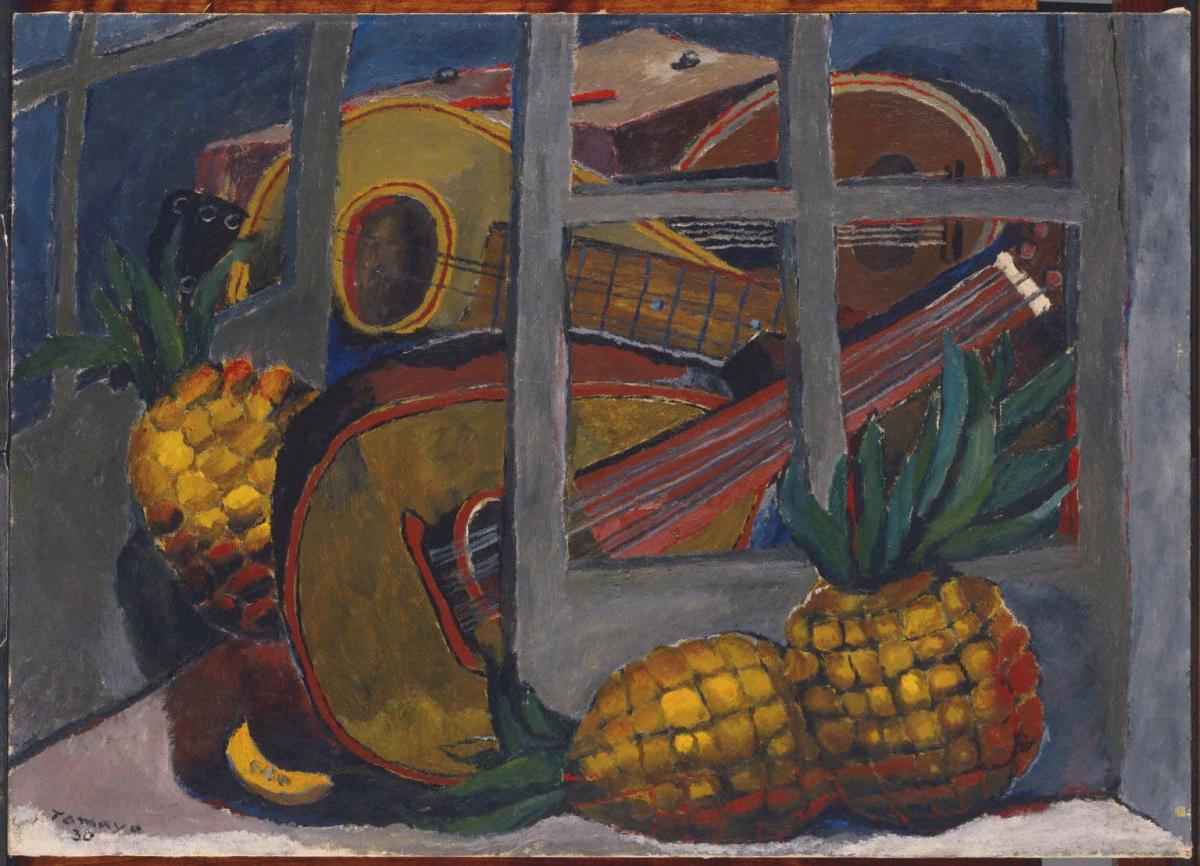Mandolins and Pineapples
Rufino Tamayo ( 1930 )

As a young painter Rufino Tamayo spent many hours reading about modern European art and sketching pre-Colombian sculpture at the National Museum of Archeology in Mexico City. He especially admired Georges Braque for his ability to focus on the essential elements in his painting. By assimilating modernism with pre-Colombian and abstract Mexican folk art, Tamayo created a style uniquely his own.
Tamayo had his first solo show at Weyhe Gallery, which often sold works of art to Duncan Phillips. In 1930, Phillips purchased the still life Mandolins and Pineapples, which shows Tamayo’s independent spirit and great color sense, qualities that undoubtedly appealed to Phillips. Fruit and musical instruments are recurrent motifs in Tamayo’s still lifes. The fruit has a special association with his childhood, when he helped his aunt sell fruit in the market, and musical instruments represent his lifelong love of music while referring to the European tradition of stringed instruments as icons of sensual pleasure. The earthbound colors—yellow, ochre, olive green, blues, and browns—are characteristic of Tamayo’s works in the 1930s. Some have argued that this darker, somber tonality was a reaction to the political turmoil in Mexico at the time, though Tamayo rarely painted images with a political message. More likely, Tamayo was paying homage to artists like Braque and Picasso, who redefined still-life painting with the advent of Cubism.